You can't control nails or glass on the road, and even the most cautious drivers can damage their tires. Tubeless tires claim to relieve that stress and worry for drivers, providing them with the security of airtight tires that can withstand small holes and punctures. But does this mean that tubeless tires are incapable of losing air and going flat? We've done the research to help you understand the ins and outs of tubeless car tires.
When it comes to losing air, tubeless tires are not immune to the loss of PSI. Although tubeless tires use liquid sealant to heal small cuts and holes, air molecules will still escape, only more slowly. Since these tires slow the release of air, you likely won't get to the point of a flat tire if you are driving on a puncture, as it will give you time to repair the tire.
Tubeless tires have a lot of advantages for vehicles. Their ability to slow the loss of air and prevent getting a flat is a huge part of their appeal. We will take a deeper look into tubeless tires, what causes them to lose air, and how to repair a puncture. So keep on reading!
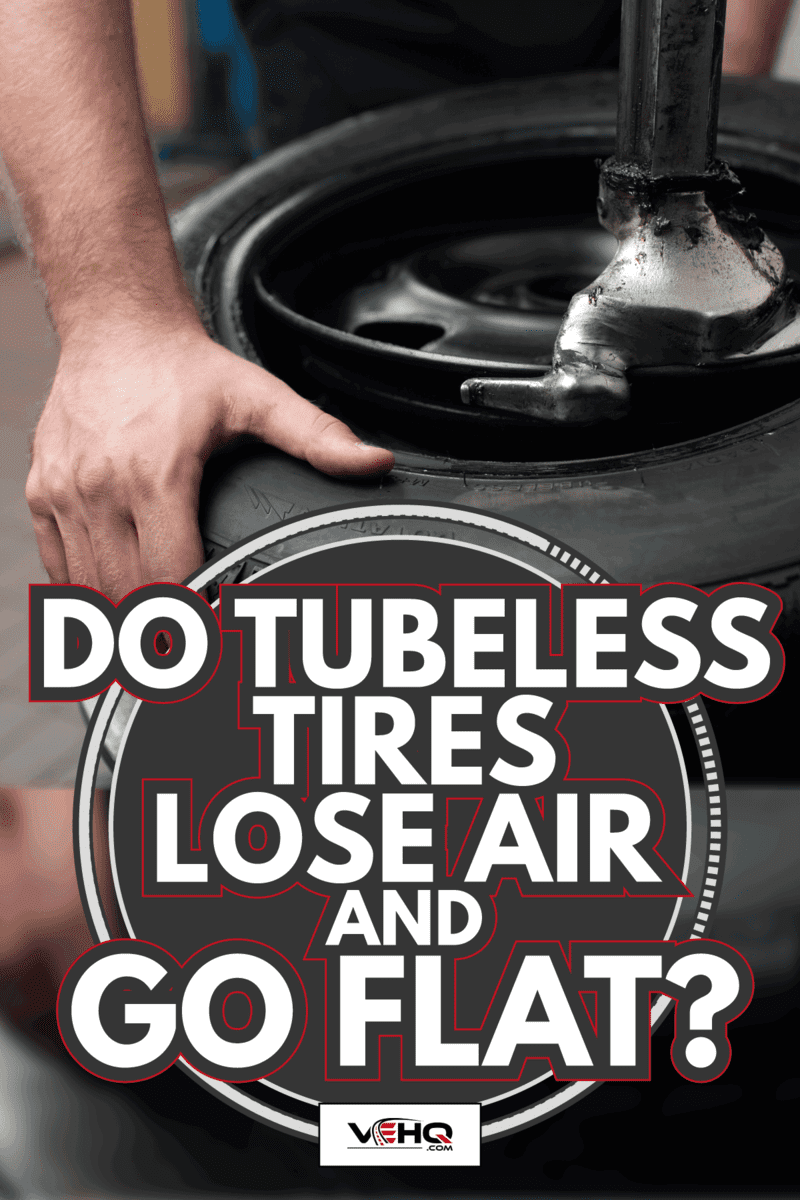
Do Tubeless Tires Lose Air?
Tubeless tires create an airtight seal between the rubber of the tire and the rim. This is then sprayed with a liquid sealant, which creates a strong, secure seal and can self-heal minor damage to the tire.
This doesn't mean that tubeless tires are incapable of losing air or going flat. All tires, tubeless or tubed, can lose air just from everyday use, like reacting to temperature fluctuations.
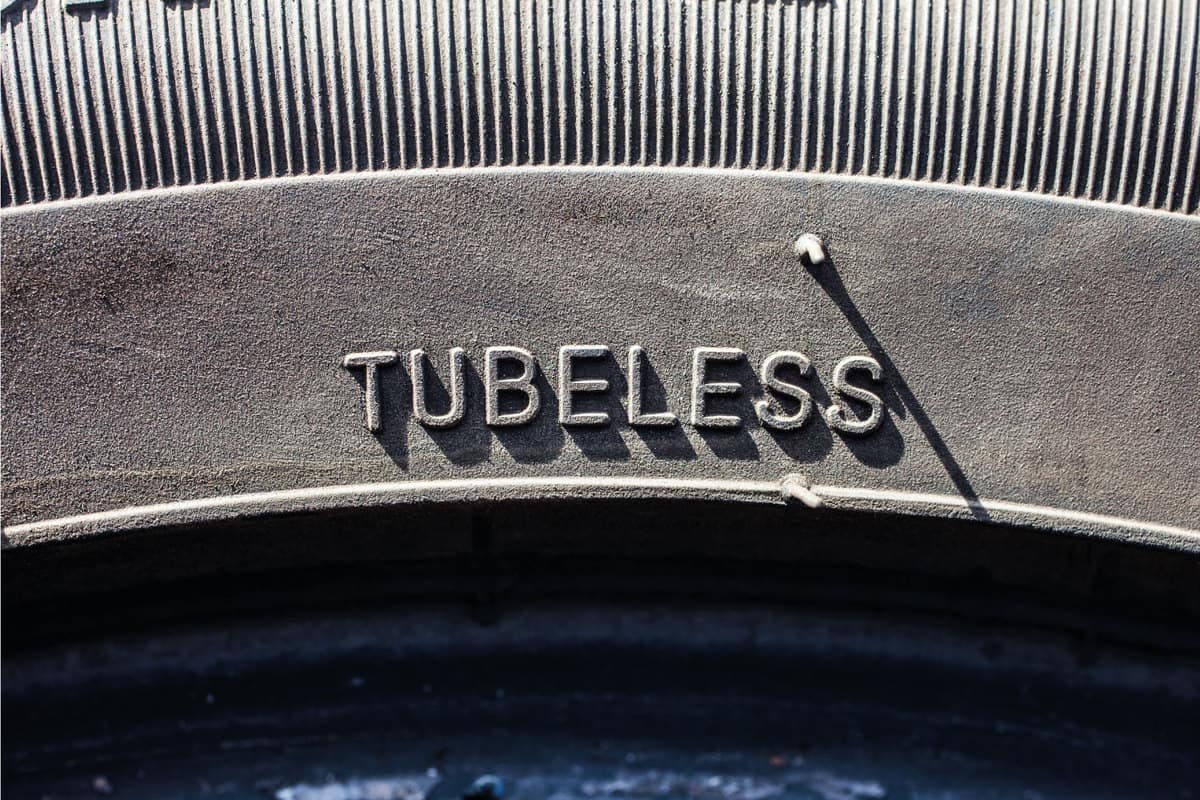
There are other causes for tubeless tires to lose air, such as a larger puncture requiring more repair. There could be a damaged seal between the rim and tire that compromises the structure of the tubeless tire.
Will tubeless tires go flat?
Any kind of tires can go flat, but tubeless are less likely to get there unless they are seriously damaged or neglected.
The sealant in tubeless tires makes tiny damages a non-issue and helps slow the leak or average punctures. Still, tubeless tires aren't indestructible.
Large gashes or openings in tubeless tires won't be able to withstand a plug or patch. For the damages that plugs can repair, they will still need to be properly fixed. Air molecules can still escape the seal. The idea is that the escape is slow enough to realize the issue and have more than enough time to fix it before driving on a flat.
When did car tires go tubeless?
Tubeless tires have a history of patens that never quite came to fruition. Killen Tire and Wingfoot Corporation had patens in the UK and South Africa, respectively, that couldn't perform well enough to be produced.
In 1952, BF Goodrich was granted a patent in the US, which produced successful tubeless tires. Today, tubeless tires are found on most modern cars.
Can a tire lose air overnight?
A tire can certainly lose air overnight. It's more likely to lose air overnight when parked than when in motion.
One reason that tires lose air is due to temperatures dropping. If the days have been warm but the nights are frigid, your tire will lose air.
If you have a puncture to your tire, like a nail or piece of glass, your tire can lose air more readily when parked overnight. A hole releases air faster when there is pressure, like the weight of the car, pushing the air outward. When tires are moving during the day, the pressure of the moving tires relieves the weight on the puncture, releasing air more slowly.
Can a car sit on a flat tire?
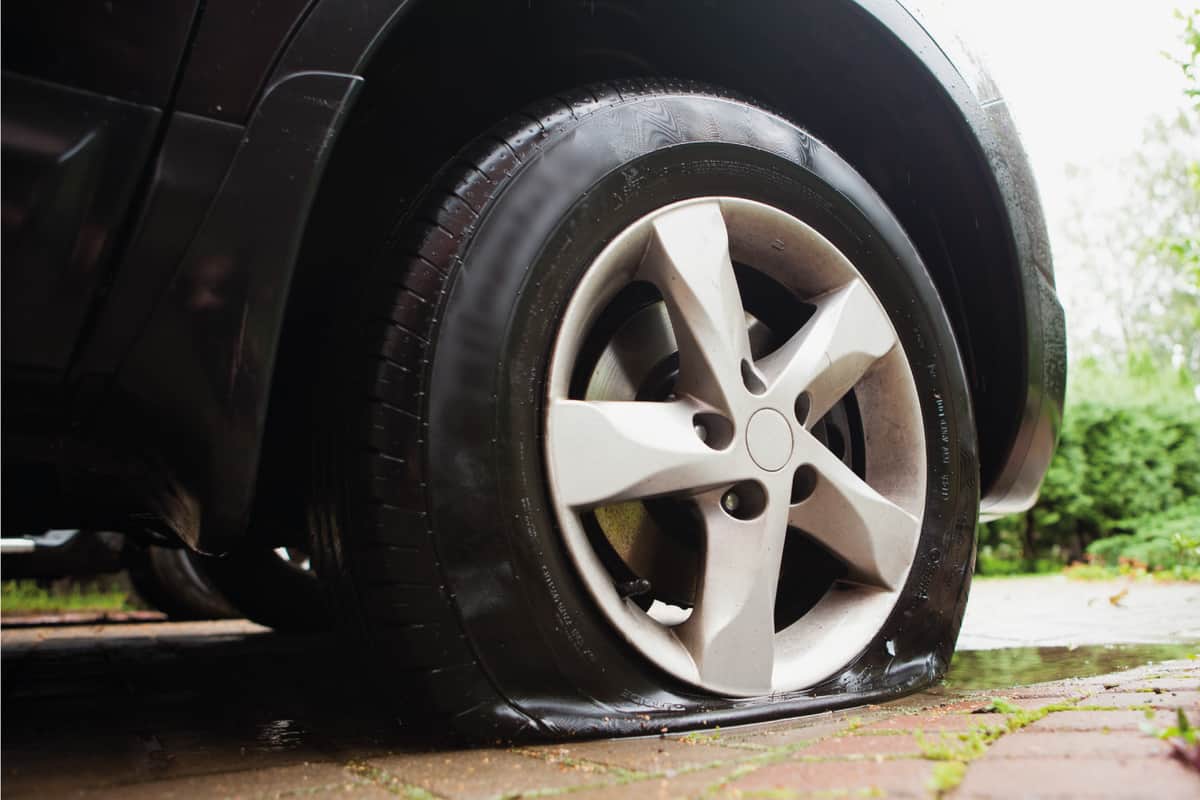
Only if necessary should a car be left sitting on a flat tire for more than a day to prevent further damage.
Leaving the tire smashed between the rim and the ground with the weight of the car on top can cause larger punctures, flat spots, and pinching. This can lead to having to get a whole new tire instead of repairing your current tire.
The weight of the car sitting on the rim of the tire can also damage the rim. Bent or flattened rims mean that the new or repaired tire cant create a solid seal, leading to leaks. Ultimately this will call for a rim replacement as well.
Alternatives
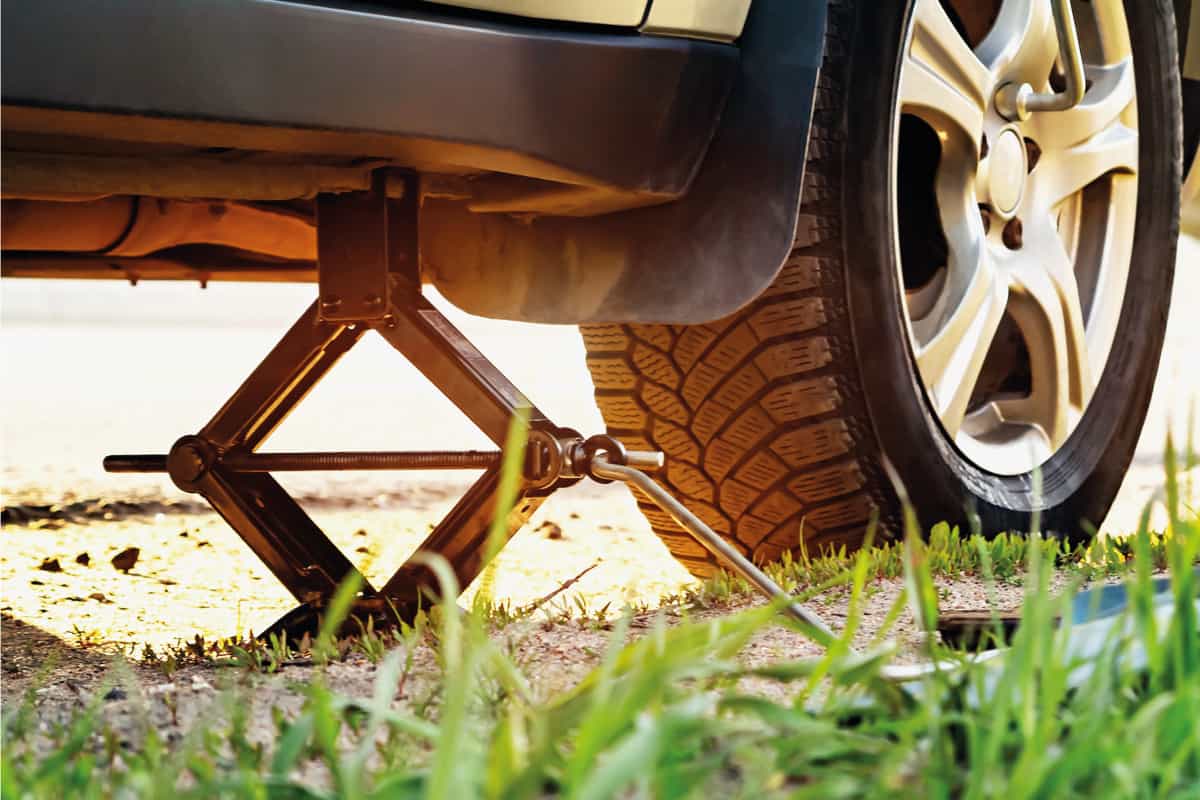
If you find that you can't fix your flat right away and have to risk leaving it on for longer than recommended, try to relieve the pressure placed on the flat.
You can use a jack to lift the side of the car off of the ground. Or, if you have a spare donut in your vehicle, replace it temporarily to prevent further damage to your tire and rim.
What are the disadvantages of tubeless tires?
Tubeless tires present a lot of advantages to drivers. They are lightweight, provide better traction, and you don't have to deal with repairing small punctures.
As with any choice, you have to weigh the disadvantages. And while there aren't many, tubeless tires do have downfalls.
Repairs
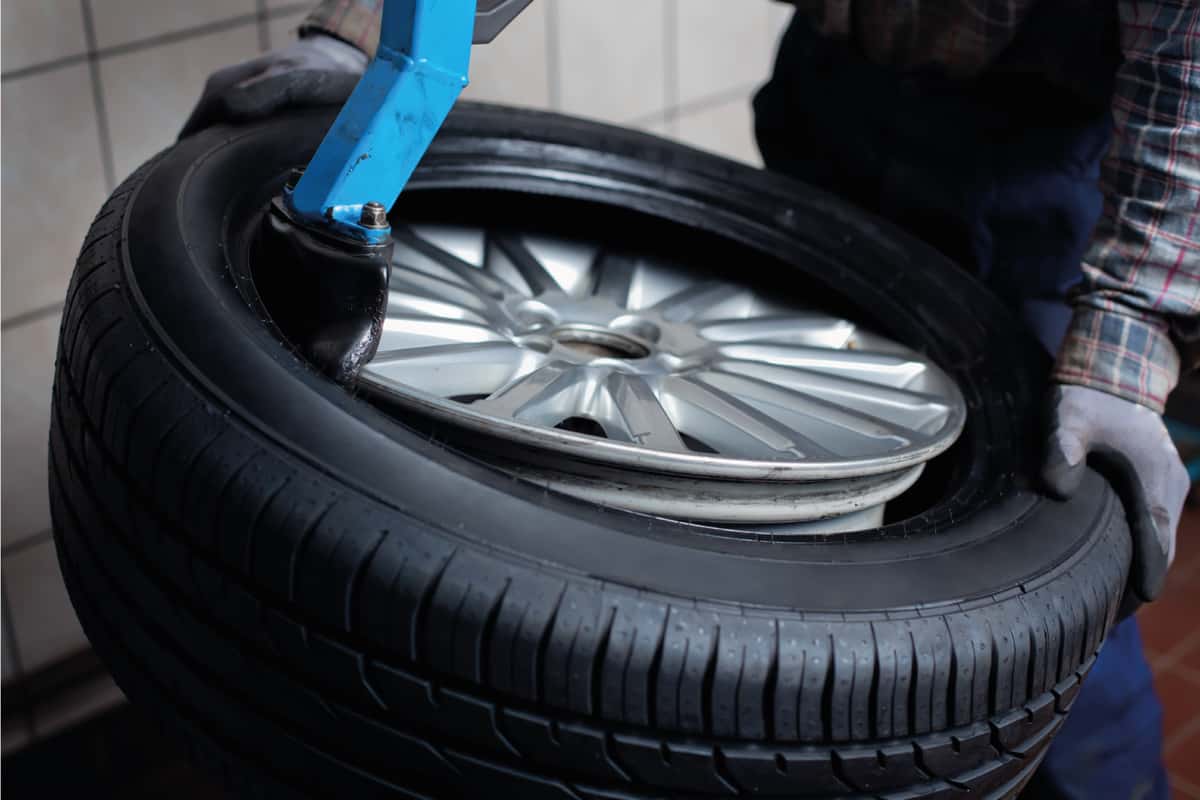
It's true that an advantage of tubeless tires is their simple puncture repair. But that's about as far as you can go with a simple repair. Any damage to the wall of the tire calls for immediate replacement.
This is because of how tubeless tires are structured to work. An airtight seal has to be created to keep the air in the tire. If the tire wall is damaged, this seal is compromised and can't be patched.
Along these same lines is another pitfall of these tires. They are hard to fit on the rims of your tire because there has to be a perfect airtight seal. A professional has to be the one to fit these tires, and if it's not done correctly, your tire will continue to leak air.
Cost
Tubeless tires are more costly than their counterparts. This is due to the process in which they have to be made and assembled. As we said before, the rim and tire have to be perfectly connected for that airtight fit.
However, this can turn into a positive because you can save money in the long run. Since punctures are less of an issue and they can run on low pressure. You'll spend less money repairing and replacing tires.
How to repair a tubeless tire puncture?
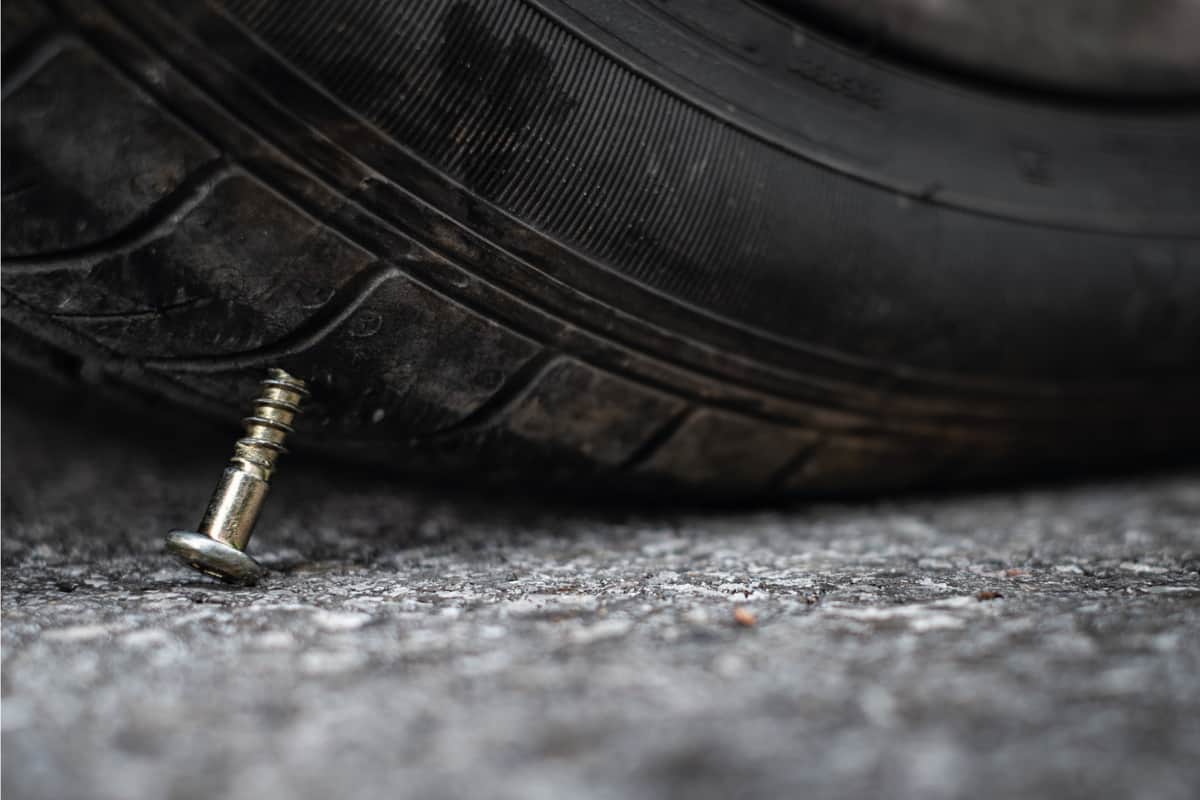
Fortunately, repairing a puncture in a tubeless tire is a relatively simple process called plugging. Plugging a puncture is a repair technique that can only be done with tubeless tires. Plugging a puncture is a process that takes a piece of rubber and closes the hole. A seal is created around this plug to trap the air in. Let's look at how to fix this puncture.
Locate The Leak
Before beginning, you need to locate the leak. If you can see a nail, glass, or other debris sticking out of your tire, then you have the culprit. However, if the puncture is small and there is no visible debris, it can be hard to locate.
If you can't locate the leak, mix water and a small amount of dish soap in a spray bottle and spray the tire. The air escaping from the tire will create bubbles on the surface of the tire, showing you the leak.
Plug The Puncture
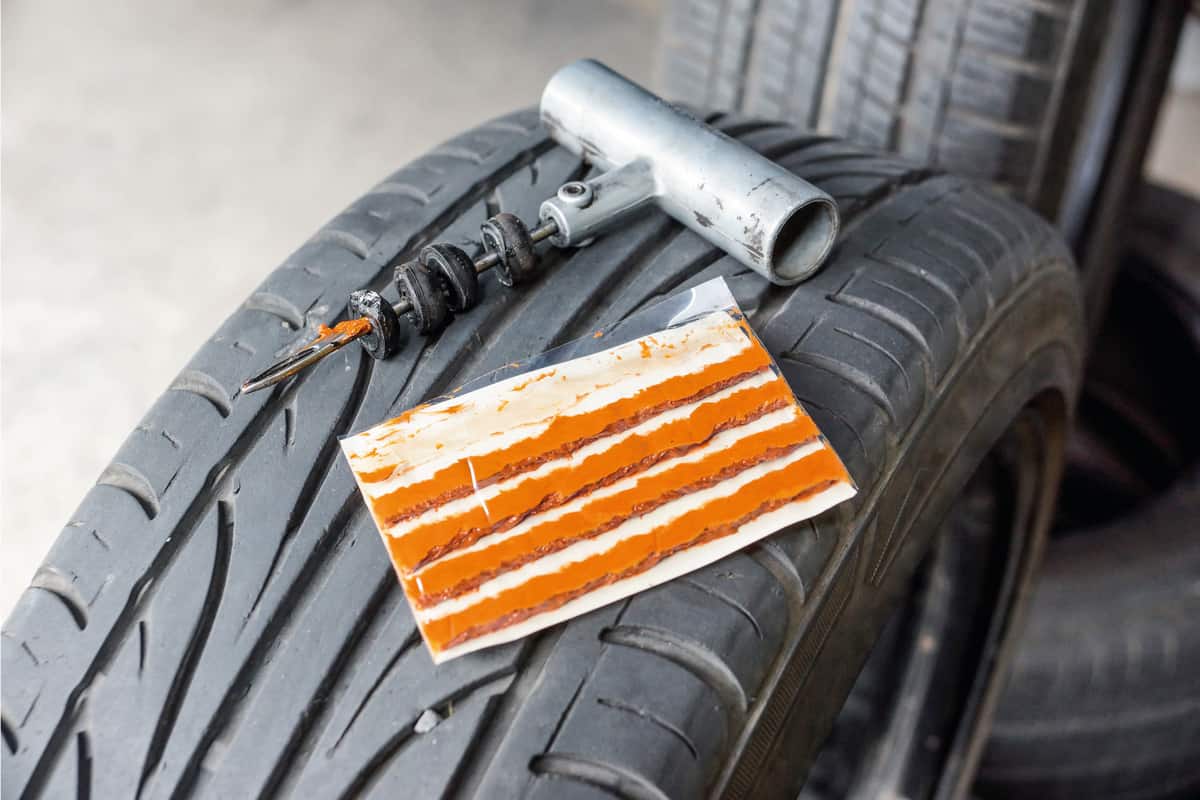
Once the leak is located, you can plug the puncture. You will need the following tools to complete this process:
- Reaming tool
- Rubber plug
- Eyelet tool
- Rubber cement or lubricant
- Pliers
- Scissors or razor blade
To simplify this process even further, you can purchase a tire puncture kit. This kit will include most of the tools for repairing these types of punctures and often come in easy-to-carry cases. Keeping one of these kits in the trunk of your vehicle is ideal for emergency repairs.
Click here to view this repair kit on Amazon.
Step 1: Prep Hole
If the debris is still in the tire, you will need to remove it. Use pliers to carefully pull the item from the tire. Then you can prep the puncture.
To do this, use the T-handle reaming tool and twist it into the puncture. Move the tool up and down to create a uniform and texture for the rubber plug to be inserted.
Step 2: Plug Hole
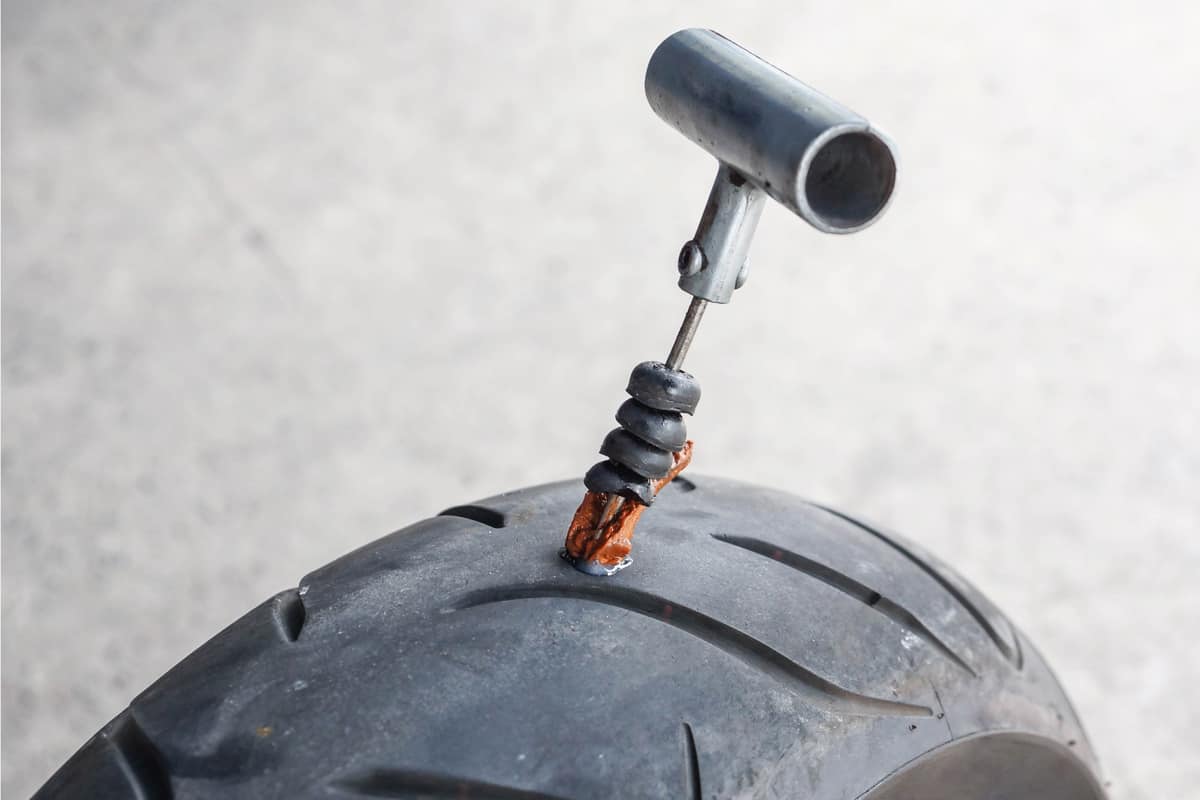
Now that the area is prepared, it's time to plug the hole. For this, you will be using the rubber plug and the eyelet tool.
Like a giant needle and thread, the rubber plug needs to be inserted through the eyelet of the tool. The rubber plug should be equidistance to the eyelet on either side when you are finished.
Next, add rubber cement or lubricant to the plug. The act of plugging the tire is successful due to compression of the hole on the plug, creating a seal. If your tire plugging kit comes with lubricant instead of rubber cement, that's not a mistake. It will work just as well.
Push the eyelet through the hole in the tire until the ends of the plug are sticking out and the middle is securely inside. Pull the eyelet out; the opening at the end of the tool will release the plug. Use scissors or a razor blade to carefully cut the excess of the plug away from the top of the tire.
In Closing
Tubeless tires have great advantages for vehicles. Still, that doesn't make them immune to the loss of air or incapable of going flat. Now that you understand how tubeless tires work and how to repair them, you can be better equipped to get the longest life from your tires.
For more on tires, check out these posts:

